How to Fix “Switch User” Option Missing in Windows 10/11?
The switch user option allows Windows users to switch to another user account quickly via the login screen and the Start menu, but recently, several users have reported that this issue is missing in Windows.

There can be several reasons you might not be able to see the switch user option, such as a temporary glitch in the system or incorrectly configured settings. Below, we look at the solutions to try if you face a similar issue on your computer.
1. Enable the Built-in Administrator Account
In several cases, the issue was caused by a glitch within the user account the users were logged into. To fix this issue, we recommend enabling the built-in administrator account in Windows and creating a new user account.
However, if you want to try your luck troubleshooting the issue within the current user account, you can run the SFC and DISM utilities in the recovery menu. These tools are run via the Command Prompt, and they work by scanning the system for potential issues. If any problems are identified, they will resolve them without requiring any input from your side.
If this does not fix the issue, you can proceed with enabling the built-in administrator account. Here is all that you need to do:
- Press and hold the Shift key on the sign-in screen, and restart your computer.
- Your Windows will now boot into the Recovery menu. Choose Troubleshoot from the list of options available.
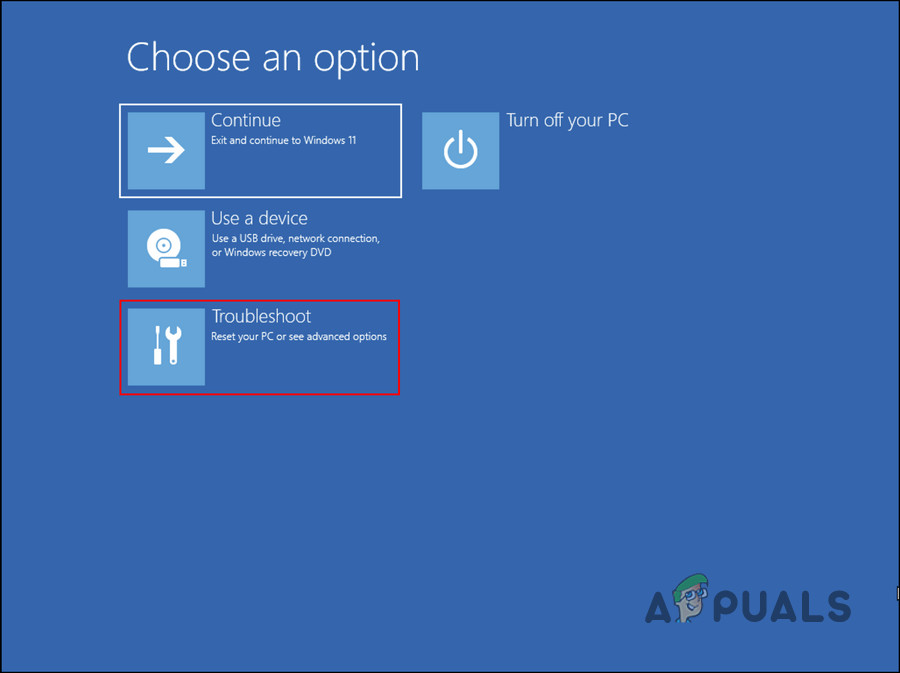
Choose Troubleshoot from the options - Navigate to Advanced options > Command Prompt.
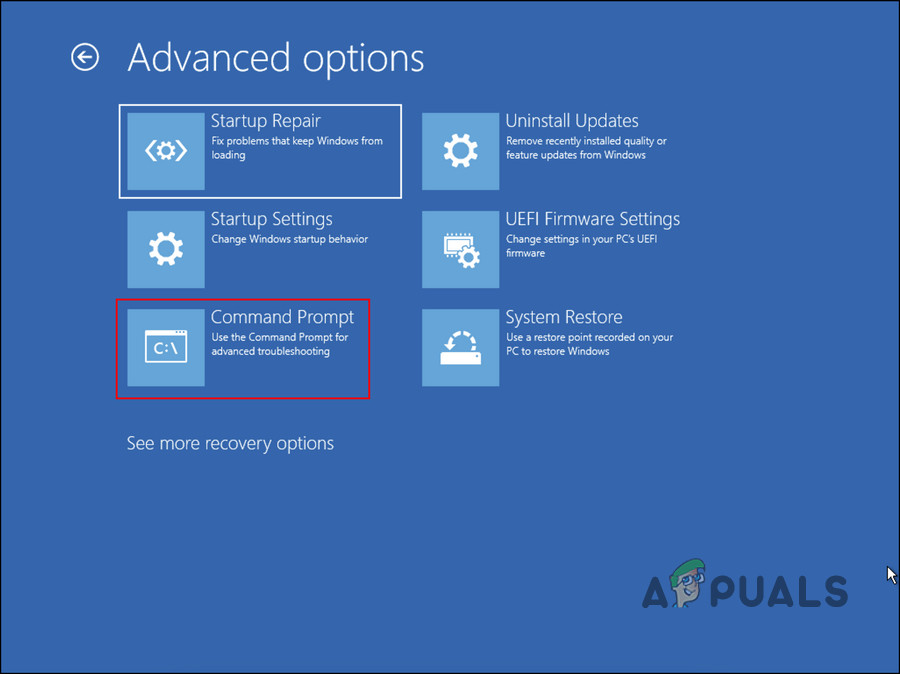
Click on Command Prompt in the Advanced options menu - Once the Command Prompt launches, type the following command in it and click Enter to execute it:
net user administrator /active:yes
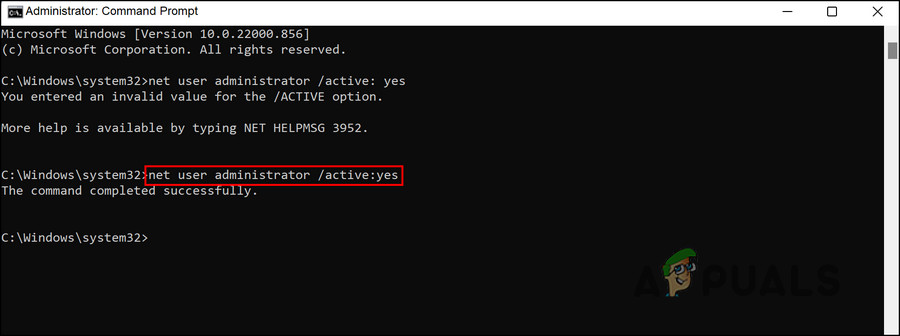
Execute the entered command - Once the command is executed, restart your computer and login using the built-in administrator account.
- Open Windows Settings by pressing the Win + I keys.
- Choose Accounts from the left pane.
- Click on Family & other users.
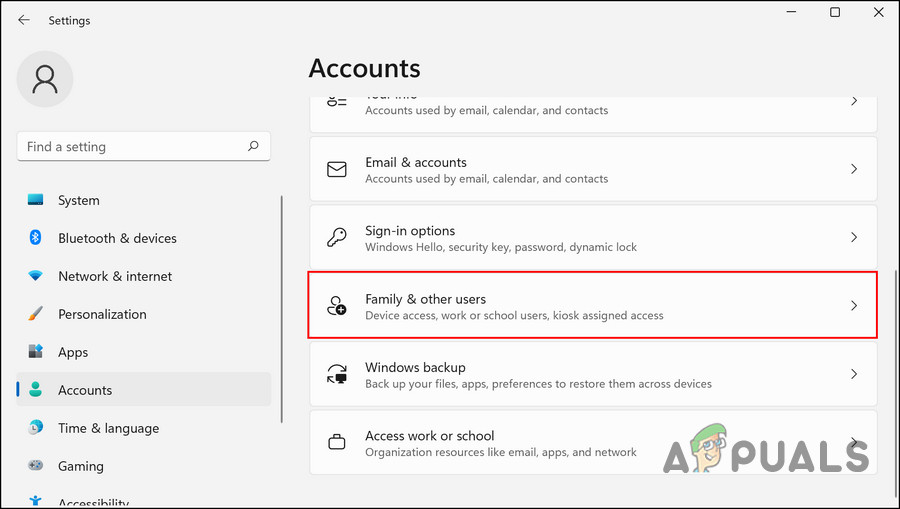
Access the Family & other user settings - Now, head to the Other user’s section and click on the Add Account button associated with Add other user.
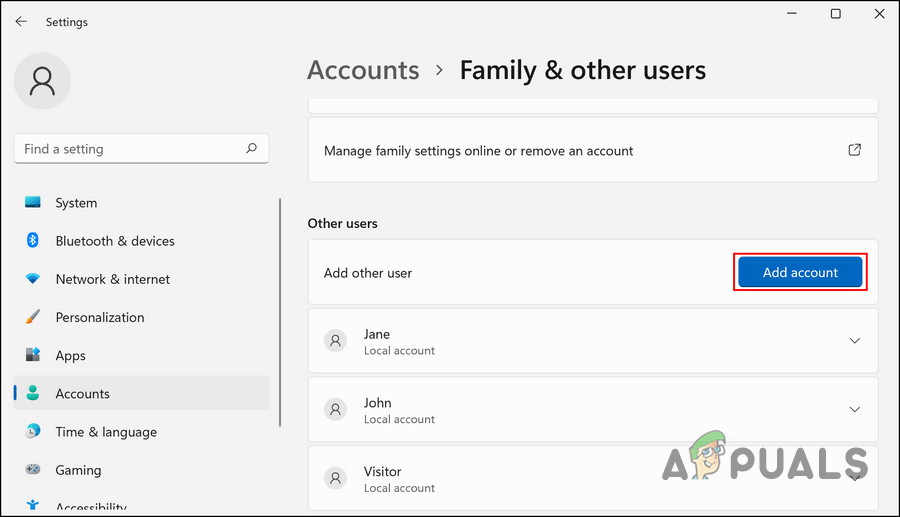
Click on the Add account button - In the following dialog, click “I don’t have this person’s sign-in information.”
- Next, click the Add a user without a Microsoft account hyperlink and enter all the required details.

Add a user without a Microsoft account - Follow the on-screen instructions to proceed.
- Once a new user account has been created, log into it and check if the issue is resolved.
2. Enable Fast User Switching
You might also be facing the problem because these particular settings are misconfigured on your system. To counter this issue, you can make an administrative-level change of enabling the fast user switching option via the Windows Registry.
Before we proceed with this method, we recommend that you create a Registry backup. This will help you revert to the current Registry state if anything goes wrong during the execution of this method. Also, ensure you are logged into your computer as an administrator to access the Registry.
Here is how you can proceed:
- Press Win + R together to open Run.
- Type regedit in the text field of Run and click Enter.
- Select Yes in the User Account Control prompt.
- Once you are in the Registry Editor, navigate to the location mentioned below:
HKEY_CURRENT_USER\Software\Microsoft\Windows\CurrentVersion\Policies\System
- If you cannot locate the System key, right-click on the Policy key and choose New > Key.
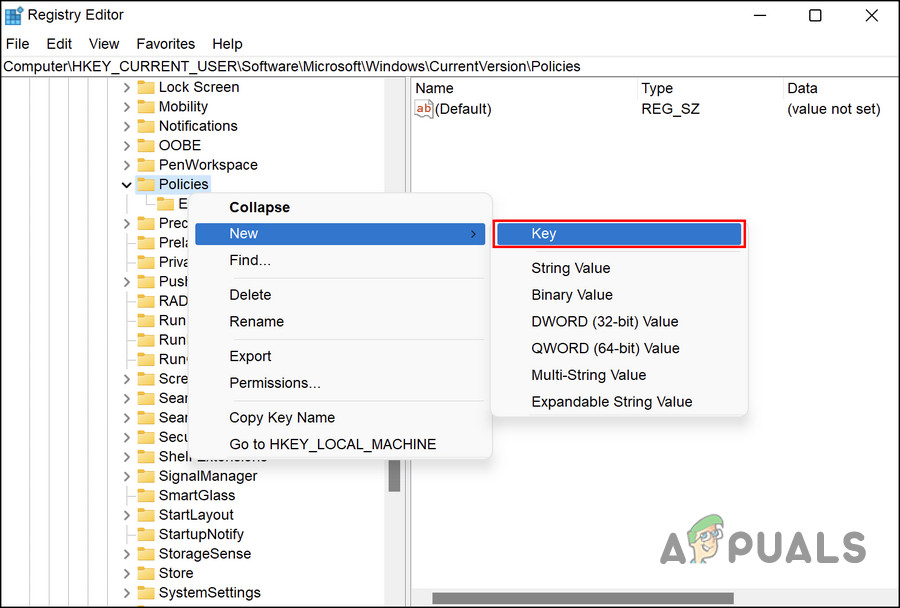
Create a new key in the Registry Editor - Rename this key as System.
- Now, choose the System key and move to the right pane.
- Right-click anywhere in the right pane and choose New > DWORD (32-bit) Value.
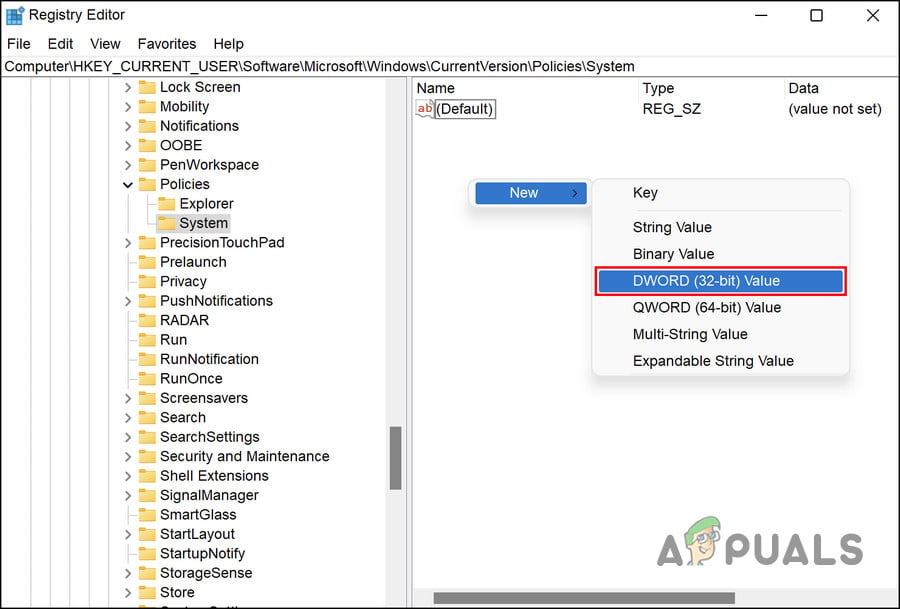
Create a new DWORD value in the Registry - Rename this key as HideFastUserSwitching.
- Double-click on HideFastUserSwitching and type 0 under Value data.

Change the value data of the DWORD value - Click OK to save the changes.
- Finally, exit the Registry Editor and restart your computer.
Hopefully, upon reboot, you can switch user accounts like before without any problems.
3. Enable the Targeted Account (If Applicable)
There is also the possibility that the account you are trying to switch to is disabled, which might prevent you from switching user accounts. If this scenario is applicable, you can use the Local Users and Groups Management console to enable the targeted account.
Here is how you can enable the targeted account using the Group Policy Editor:
- Press the Win + R keys together to open Run.
- Type lusrmgr.msc in Run and click Enter.
- Click Yes in the User Account Control prompt.
- Once inside the Local Users and Groups Management console, choose Users from the left pane.
- Now, locate the user account you want to switch to, and right-click on it.
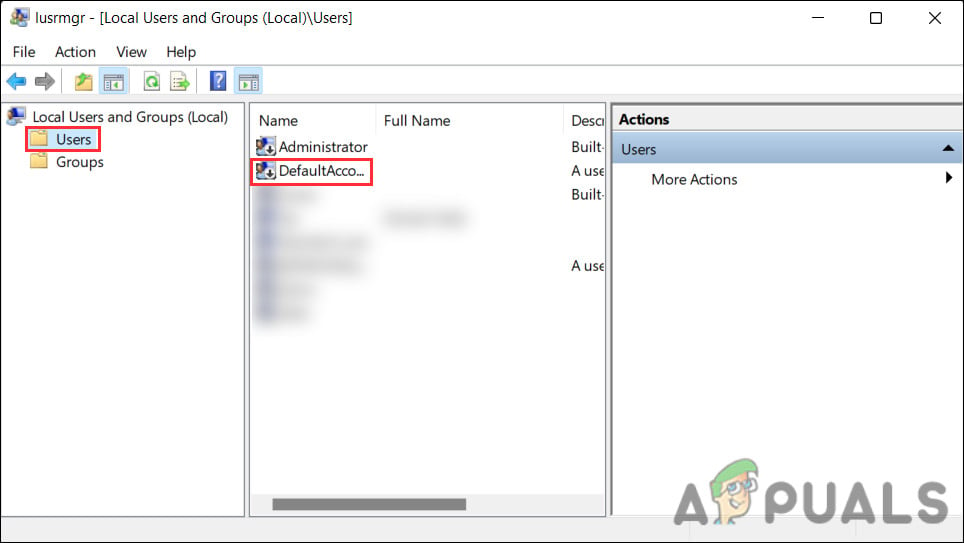
Choose the account - Choose Properties from the left pane.
- In the Properties dialog, head over to the General tab.
- Locate the Account is disabled option and uncheck the box associated with it.
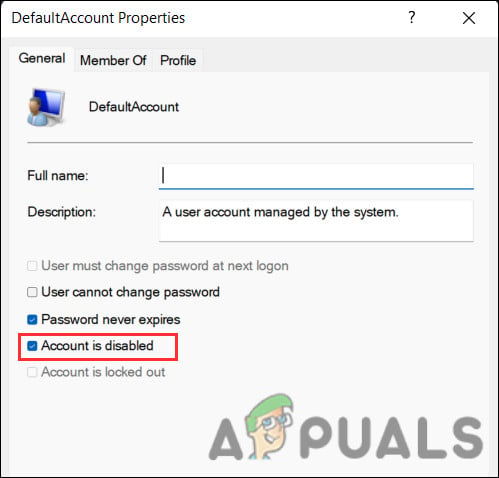
Disable the account - Click Apply > OK to save the changes.
You should now be able to switch the accounts successfully.




